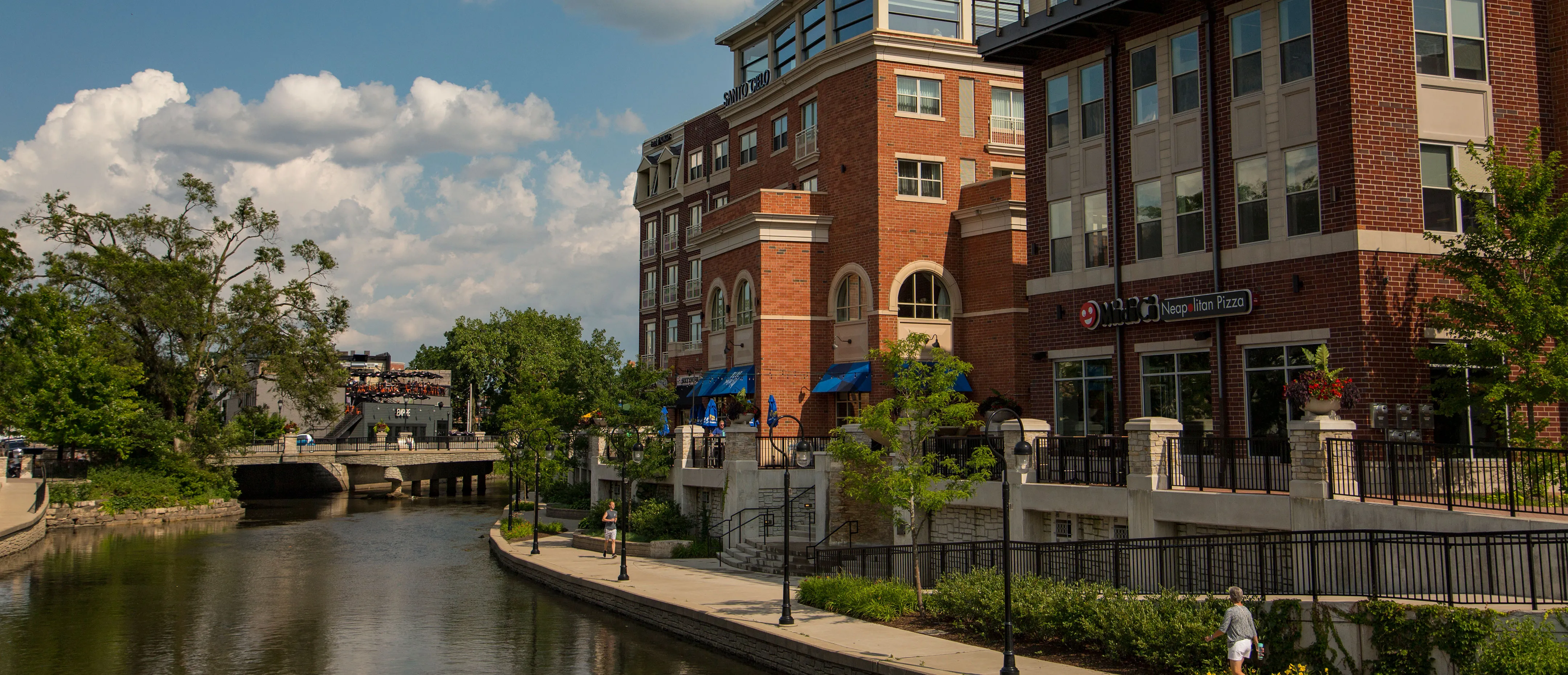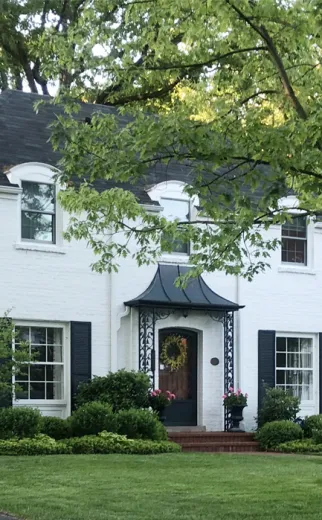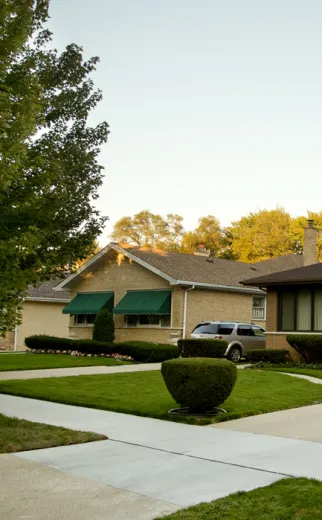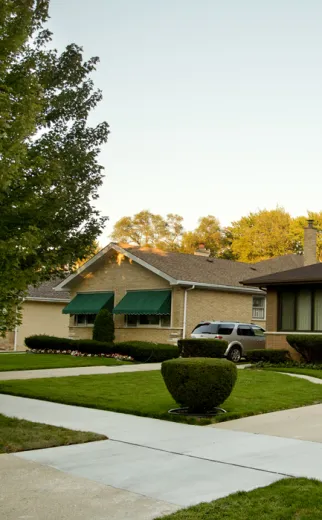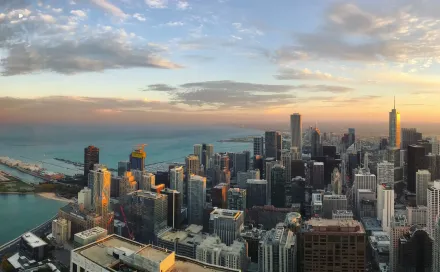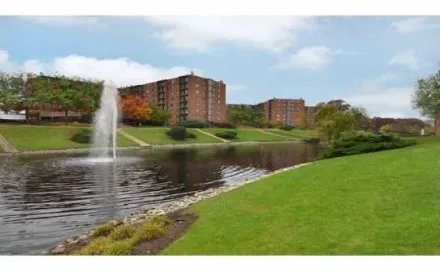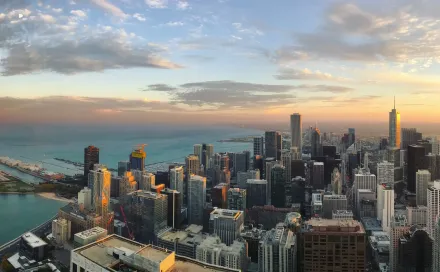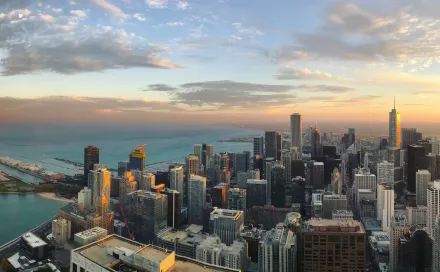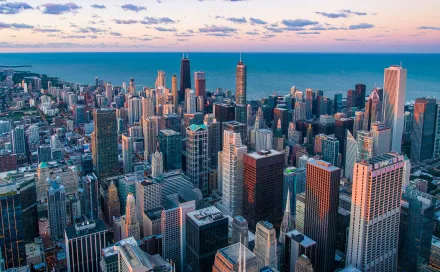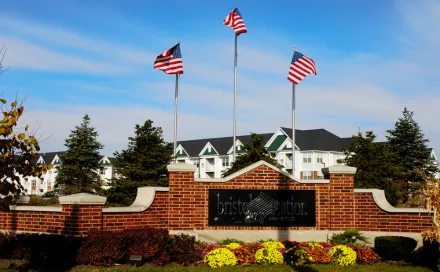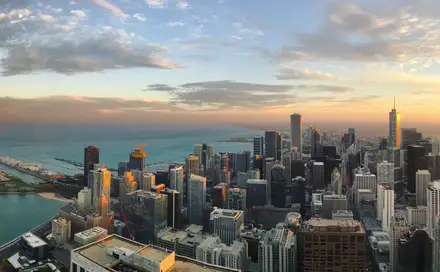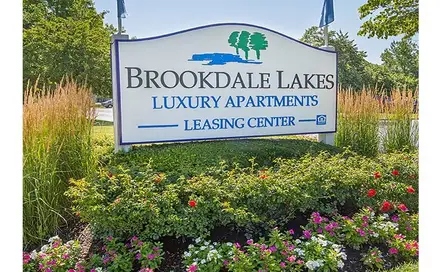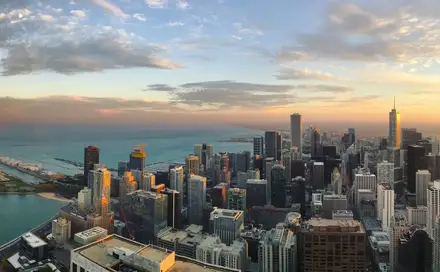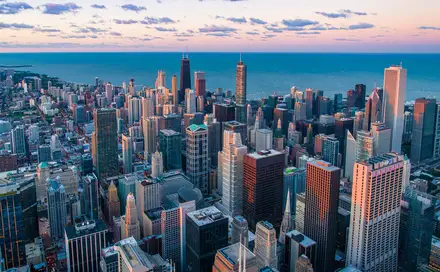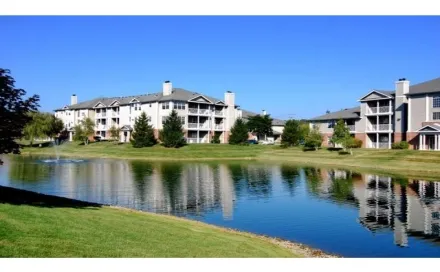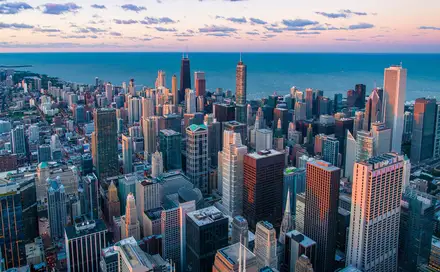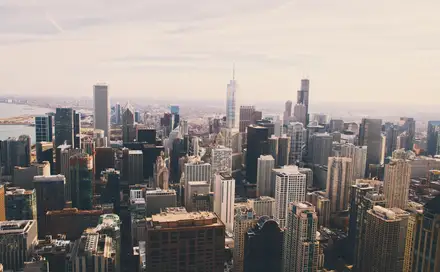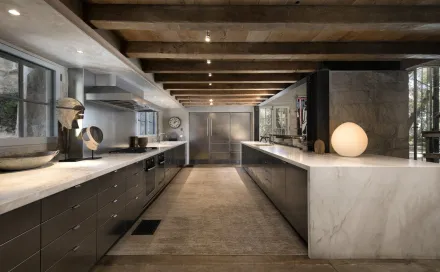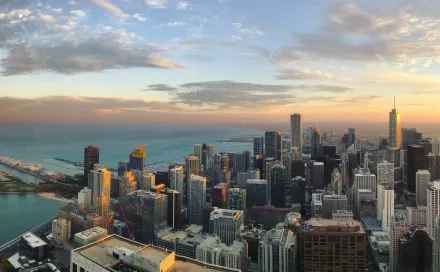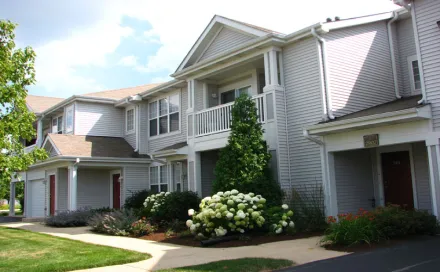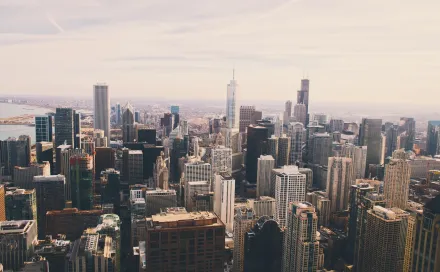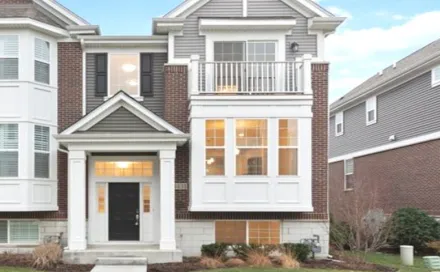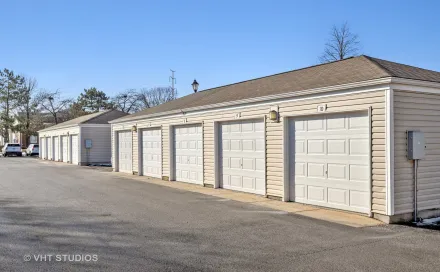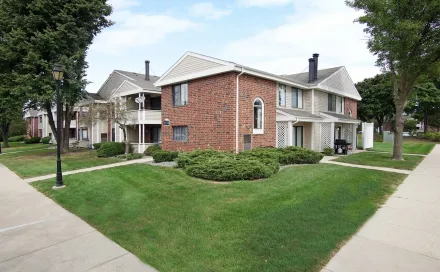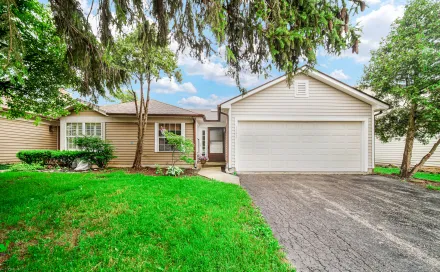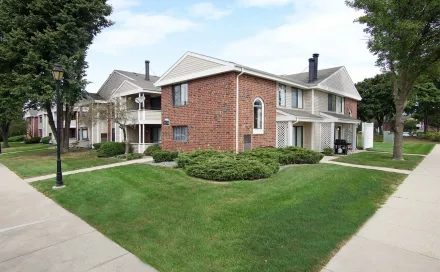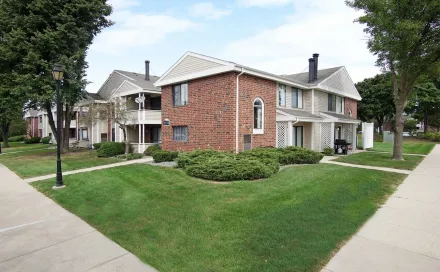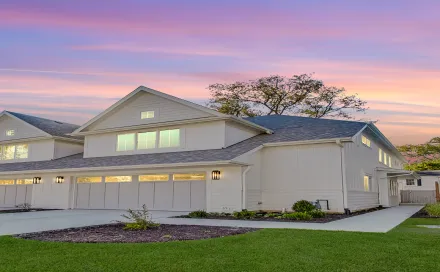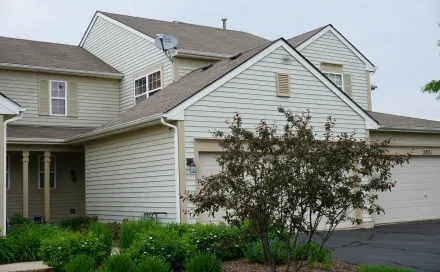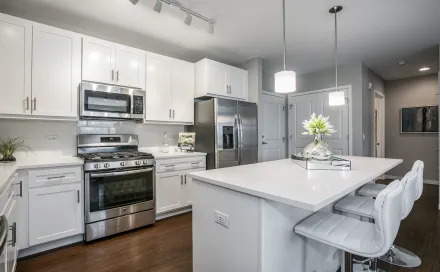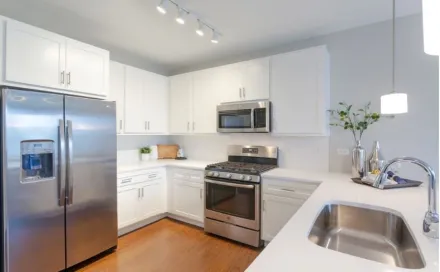Apartments for rent in Naperville
FAQs about Naperville
Naperville Apartment Living

Neighborhood Vibe
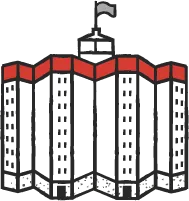
Heart of the Neighborhood
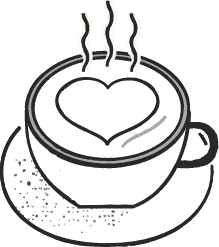
What We Love Most
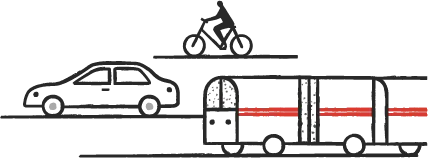
Best Way to Get Around
Find Naperville Apartments
| Find Naperville Apartments | |
|---|---|
|
1 Bedroom in Naperville
Average Rent
|
$2.0k-
2.7k
|
|
2 Bedroom in Naperville
Average Rent
|
$2.5k-
3.1k
|
|
3 Bedroom in Naperville
Average Rent
|
$3.0k-
7.5k
|
Around the Neighborhood
Much of Naperville's housing consists of subdivisions with recreational facilities, such as tennis courts and neighborhood pools. Naperville apartments are abundant and can be found in large complexes with lavish amenities or mid-size buildings with more modest trappings. Both single-family homes and condominiums are also available for rent in Naperville. Naperville has many apartments available in various styles, floorplans, and sizes. This is as much a rental community as an owning community.
You’ll come across families, professionals, and long-time locals all enjoying life here, whether grabbing a coffee from an indie cafe like Sparrow, doing yoga in the park, or taking their kids for hands-on fun at the DuPage Children’s Museum before unwinding with jazz in Central Park. It’s all friendly, safe, and low-key sophisticated. At its core, Naperville is powered by community, one that shows up for outdoor festivals, school fundraisers, and Friday night football. It’s a place where people get involved, where things work, and where people might come for the schools or the Riverwalk… but stick around for the sense of belonging.
Demographics of Naperville, IL
Naperville has approximately 149,000 residents, making it one of the biggest cities in Illinois outside of Chicago. It’s a diverse population, with over 30% identifying as Asian, and nearly 10% Hispanic or Latino. They’re also highly educated, as over 66% of adults hold a bachelor’s degree or higher, well above the national average. The median household income is around $135,000, resulting in a high quality of life and strong local economy. And with a median age of 39, there’s a balance between youthfulness and family-focused stability.
Weather in Naperville, IL
Naperville weather presents all four seasons in their Midwestern glory, so you’ll want everything from flip-flops to snow boots in your wardrobe. Summers are warm and often humid, with average highs about 82°F. Fall brings cooler, crisper air and gorgeous foliage with highs in the 60s to low 70s early but dropping into the 40s by November. Winter is cold, snowy, and a bit moody, just like a shivering Chicagoan should be; highs usually hang out in the 30s with lows often in the teens. But spring is worth the wait, with blooming greenery and highs reaching the 70s by May.
Shopping and Dining in Naperville, IL
Want to satisfy your sense of style? Or your appetite? Whichever it is, you’ll find an option here. Downtown Naperville has over 100 shops, boutiques, cafes, and restaurants, from top-tier retailers like Anthropologie and Sephora to locally owned boutiques and bookstores.
If you’re a foodie (or just plain hungry), you’ll be satiated on the culinary front. Whether you’re hankering for gourmet fare or casual comfort food, the options are bountiful. Grab a burger and craft beer at Empire Burgers + Brew, enjoy wood-fired pizza at Lou Malnati’s, or grab a booth at Sullivan’s Steakhouse. Or check out Vasili’s Mediterranean, Mesón Sabika for truly superb tapas, or Sharko’s BBQ for lip-smackingly-good smoked meats. Top it off in decadent style at Le Chocolat du Bouchard for a dessert experience a Parisian might envy, or visit Naper Nuts & Sweets, a local landmark since 1983. Oberweis Ice Cream and Dairy Store has been a Chicago mainstay, and Naperville enjoys two locations.
Shopping centers like Freedom Commons and Naperville Crossings feature big-box stores, spas, gyms, and even more food options.
Nightlife in Naperville, IL
Naperville’s nightlife scene walks the line between laid-back charm and big-night-out verve. Downtown is where you’ll find a truly eclectic mix of bars, pubs, and lounges.
Start your evening with a pint at Quigley’s Irish Pub, beloved by locals for its live music, hearty pub fare, and authentic Irish ambiance. Prefer wine flights or craft beer? SixtyFour Wine Bar & Kitchen is your spot, with 64 self-serve taps and a cozy ambiance. Then turn up the volume at Frankie’s Blue Room or Two-Nine Martini Lounge for DJs, dancing and club atmosphere. Or get more casual at The Lantern, an old favorite for karaoke nights and strong drinks.
For the flip side of “strong drinks”, check out Go Brewing, a non-alcoholic craft brewery with live music, comedy shows, and wellness-focused events if you want your fun night out to not be capped with a hangover.
Entertainment and Recreation in Naperville, IL
Are you a duffer or a zero handicapper? Either way, Naperville has you covered with seven golf courses for every skill level. Public options like Springbrook Golf Course and Naperbrook Golf Course are managed by the Naperville Park District and are known for their immaculate greens. Private clubs like Naperville Country Club, White Eagle Golf Club, and Cress Creek Country Club offer tonier experiences and championship-level play. Plus, there’s a wide range of courses in adjacent communities, like the Tamarack Golf Club in nearby Woodridge. Or try Topgolf Naperville, a tech-driven driving range and social hub where you can get your swing in shape. The BrightSide Theatre and Wentz Concert Hall host live performances, and there are plenty of movie theaters, too, from class ones to the dine-in Hollywood Palms Cinema, an homage to movie palaces of the past.
Naperville’s sense of community is evident in its packed calendar of year-round events. The Last Fling festival over Labor Day weekend is a local favorite, offering live music, carnival rides, and family fun. In winter, Christkindlmarket brings a touch of European holiday magic to town. Its well-known Ribfest closed its gates after 35 years. But other events like Naperville Ale Fest, Naperville Soulfest and many others are still going strong, each adding to Naperville’s welcoming, event-loving spirit of community.
Naperville can boast over 130 parks and forest preserves, including Springbrook Prairie Forest Preserve. Not in the mood for a hike? Go cast a line in one of the city’s many fishing spots. In the summer. Centennial Beach, a former stone quarry turned swim area, is a local favorite for cooling off.
Transportation in Naperville, IL
Access to Highways
Naperville enjoys great connectivity via major highways, primarily via Interstate 88, also known as the Reagan Memorial Tollway, giving direct access to Chicago and other western suburbs. Interstate 355 offers north-south options linking Naperville to the wider Chicagoand area. Route 59 is another key corridor for local and regional traffic.
Public Transportation in Naperville
While the CTA doesn’t extend to Naperville, the city is served by PACE Suburban Bus routes, which connect residents to neighboring communities and transit hubs. Key routes include Route 530 (West Galena-Naperville), Route 714 (Naperville-COD-Wheaton Connector), Route 714 (Ogden Avenue) and Route 559 (Route 59).
Naperville is served by two Metra stations on the BNSF Railway Line, offering convenient commuter rail service to and from Chicago. Naperville Station serves downtown Naperville, while Route 59 Station caters to the northern part of Naperville and nearby areas. Both offer amenities like waiting rooms, ticket vending machines, and connections to PACE bus routes.
Distance to Downtown and Other Notable Locations
Naperville straddles the DuPage River, which meanders from its northern tip to its southern quarter. Nestled against the river's west bank, Naperville's cozy downtown area is a hub of activity. The city center comprises 16 square blocks populated with shops and restaurants, including more than a few national retailers and local boutiques. Most big-box retailers and fast food joints are located along Route 59, while car dealerships and local businesses line Ogden Avenue.
But the pride and joy of the city may be its Riverwalk, which offers nearly two miles of scenic pathways, fountains, bridges, outdoor sculptures, and recreational opportunities. In Naperville, local public transportation is limited, so most renters drive to the downtown area and roam the small grid of pedestrian-friendly streets on foot.
Naperville is about 30 miles west of downtown Chicago, making it a viable commute via car or Metra train. The drive typically takes around 35–50 minutes, depending on traffic.
Parking Options and Availability
Naperville is a car-centric community, so it offers a good range of parking options to accommodate residents and visitors:
- Downtown parking: Multiple parking garages and surface lots are available, including the Central Parking Facility, Van Buren Parking Deck, and Water Street District Parking Facility. On-street parking is also accessible, with time restrictions that vary by location.
- Parking at train stations: Daily fee parking is available at both the Naperville and Route 59 Metra stations. Payment is mandatory from 6 a.m. to 6 p.m. on weekdays. Parking is complimentary after 6 p.m., as well as on weekends and major holidays.
- Event parking: On the occasion of special events, extra parking might be accessible in specific areas.
It's good to review the event details for more information. For real-time parking availability and to plan your visit, check the Downtown Naperville Parking Map.
Schools and Higher Learning Institutions in Naperville, IL
Public, Private, and Charter Schools
Naperville is home to two of the top-performing public school districts in Illinois: Naperville Community Unit School District 203 and Indian Prairie School District 204. Both consistently earn high marks for academic excellence, teacher quality, and college readiness. Schools like Naperville Central High School, Naperville North High School, Neuqua Valley High School, and Metea Valley High School are frequently ranked among the best in the state.
For families seeking private education, Naperville offers a wide range of choices—from faith-based institutions like Saints Peter and Paul Catholic School, Benet Academy and All Saints Catholic Academy, to independent schools such as The Avery Coonley School, regarded for its gifted education programs.
There are currently no charter schools operating directly within Naperville, but nearby communities like Aurora and Lisle offer charter options.
University, College, and Higher Learning Institutions
Naperville is home to North Central College, a respected private liberal arts college located near downtown. The campus not only contributes to the city’s energetic academic atmosphere but also hosts cultural events, lectures, and performing arts programs.
Naperville residents also have easy access to nearby institutions, such as College of DuPage, a top-rated community college only minutes away in Glen Ellyn. There's also Benedictine University, a private Catholic university in nearby Lisle and Northern Illinois University – Naperville Campus, offering graduate programs and continuing education courses for working professionals.
Real Estate in Naperville, IL
As you might expect from one of Chicagoland’s most sought-after suburbs, Naperville offers a strong and varied housing market. Whether you're looking for a classic single-family home on a tree-lined street or a modern apartment steps from downtown shopping and dining, Naperville has something for nearly every lifestyle and stage of life. The local real estate market is highly competitive, thanks to top-rated public schools, a low crime rate, and an overall high quality of life. Buyers range from first-timers drawn to the stability of the market to professionals relocating for work and retirees seeking a peaceful, walkable community.
Home values in Naperville tend to hold steady and appreciate over time. Median prices sit well above the national average, and low housing inventory continues to drive demand. On the outskirts of town, newer subdivisions offer contemporary homes with open layouts and larger lots. Meanwhile, Naperville’s historic downtown showcases charming vintage homes full of character, all within walking distance of restaurants, parks, and the Riverwalk.
Naperville’s rental market offers a solid mix of options, including sleek downtown apartments, spacious townhomes, and family-friendly single-family homes in quieter residential neighborhoods. One-bedroom apartments typically range from $1,800 to $2,200 per month, with larger units or more updated properties frequently surpassing $2,500.
Architectural styles vary across the city. You'll find brick townhomes, mid-rise apartment buildings with modern amenities, and an abundance of contemporary ranch-style and two-story homes. Many properties include attached garages, private yards, and access to nearby parks or trail systems—perfect for active renters or families.
And if you're looking for something truly unique? Naperville even features a private fly-in community where homes are built around a central airstrip—ideal for pilots who prefer to commute by plane.
History of Naperville, IL
The city was first established when Joseph Naper founded a settlement on the DuPage River in the 1830s. It remained a rural farming community until the 1960s when the population rose steadily. The 1980s marked the beginning of a period of spectacular growth. The city has quadrupled in size over the past few decades as access to Chicago and the Chicagoland suburbs has improved with the construction of both Interstate 88 (the Ronald Reagan Memorial Tollway), which pierces through the northern edge of the city, and Interstate 355 (the Veteran's Memorial Tollway) which runs a few miles to the east. Only 30 miles from downtown Chicago, Naperville apartments for rent continue to attract a wide range of engineering, manufacturing, and research and development-oriented corporations, contributing to its booming local job market.
Ask most residents about its history and you’ll likely hear that Naperville is actually two years older than Chicago since it was founded in 1831 by Captain Joseph Naper and his family. They had arrived via schooner from New York and created Naper Settlement. Thanks to its location near the DuPage River, it grew into a key stop for westward-ho! pioneers and a hub for milling, trading, and farming in northern Illinois. By 1857, Naperville was officially incorporated as a village and was the DuPage County seat until 1868.
Naperville's population exploded after the railroad's arrival in the 1860s. The town quickly grew into a commuter and trade hub, and it sprawled outward as it grew. During the 20th century, Naperville transformed from a sleepy farming town into a very desirable Chicago suburb, and its population shot from just 12,933 in 1960 to over 149,000 today.
Nowadays, that heritage is on display at Naper Settlement, a 12-acre outdoor history museum where costumed interpreters bring the 19th century to life. Naperville’s story is very much one of transformation, as it successfully rode currents of change to become one of America’s most desirable locales. You can delve into its history via the Naperville Public Library’s local history archives and the Naperville Heritage Society.

